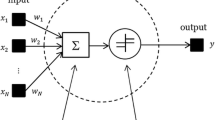Abstract
As the state of the art in bridge design is advancing toward the performance-based design, it becomes increasingly important to monitor and evaluate the long-term structural performance of bridges. Such information is essential in developing performance criteria for design. In this research, sensor systems for long-term structural performance monitoring have been installed on two highway bridges. Preliminary vibration measurement and data analysis have been performed on these instrumented bridges. On one bridge, ambient vibration data have been collected, based on which natural frequencies and mode shapes have been extracted using various methods and compared with those obtained by the preliminary finite element analysis. On the other bridge, braking and bumping vibration tests have been carried out using a water truck in addition to ambient vibration tests. Natural frequencies and mode shapes have been derived and the results by the breaking and bumping vibration tests have been compared. For the development of a 3 dimensional baseline finite element model, the new methodology using a neural network is proposed. The proposed one have been verified and applied to develop the baseline model of the bridge.
Similar content being viewed by others
References
Abdel-Ghaffer, A.M. and Scanlan, R.H. (1985). “Ambient Vibration Studies of Golden Gate Bridge. I: Suspended Structure,”Journal of Engineering Mechanics, ASCE, Vol. 111, No. 4, pp. 463–482.
Aktan, A.E., Catbas, F.N. Grimmelsman, K.A., and Tsikos, C.J. (2000). “Issues in Infrastructure Health Monitoring for Management,”Journal of Engineering Mechanics, ASCE Vol. 126, No. 7, pp. 711–724.
Asmussen, J.C. and Brincker, R. (1996). “Estimation of Frequency Response Function by Random Decrement,”Proceedings of International Modal Analysis Conference, pp. 246–252.
Bement, M.T. and Farrar, C.R. (2000). “Issues for the Application of Statistical Models in Damage Detection,”Proceedings of the 18 th International Modal Analysis Conference, pp. 1392–1398.
Bendat, J.S. and Piersol, A.G. (1993).Engineering Application of Correlation and Spectral Analysis, John Wiley & Sons, New York, USA.
Brinker, R., Zhang, L., and Andersen, P. (2000). “Modal Identification from Ambient Response Using Frequency Domain Decomposition,”Proceedings of 16 th International Modal Analysis Conference, San Antonio, Texas, USA, Feb., 6–10, pp. 625–630.
California Department of Transportation (1996).Seismic Design Criteria V.1.1, July.
Cole, H.A. (1968). “On-The-Line Analysis of Random Vibrations,”AIAA Paper, no. 68-288.
Dherty, J.E. (1987). “Nondestructive Evaluation”, Chapter 12 inHandbook on Experimental Mechanics, A.S. Kobayashi Edt., Society for Experimental Mechanics, Inc.
Doebling, S.W., Farrar, C.R., Prime, M.B., and Shevitz, D.W. (1998). “A Review of Damage Identification Methods that Examine Changes in Dynamic Properties,”Shock and Vibration Digest, 30(2).
Ewins, D.J. (1999).Modal Testing: Theory, Practice and Application, Wiley, John & Sons.
Feng, M.Q. and Kim, D.K. (2001).Long-Term Structural Performance Monitoring of Two Highway Bridges, RTA-59A0155, California Department of Transportation.
Feng, M.Q., Kim, J.M., and Xue, H. (1998). “Identification of a Dynamic System Using Ambient Vibration Measurements,”Journal of Applied Mechanics, ASME, Vol. 65, No. 4, pp. 1010–1021.
Harik, I.E., Allen, D.L., Street, R.L., Guo, M., Graves, R.C., Harrison, J., and Gawry, M.J. (1997). “Free and Ambient Vibration of Brent-Spence Bridge,”Journal of Structural Mechanics, ASCE, Vol. 123, No. 9, pp. 1262–1268.
Masri, S.F., Smyth, A.W., Chassiakos, A.G., Caughey, T.K., and Hunter, N.F. (2000). “Application of Neural Networks for Detection of Changes in Nonlinear Systems,”Journal of Engineering Mechanics, ASCE, Vol. 126, No. 7, pp. 666–676.
Otte, D., Ponseele, P.V.D., and Leuridan, J. (1990). “Operational Shapes Estimation as a Function of Dynamic Loads,”Proceedings of the 8 th International Modal Analysis Conference, pp. 413–421.
Peeters, B. and Roeck, G.D. (2000). “One Year Monitoring of the Z24-Bridge: Environmental Influences Versus Damage Events,”Proceedings of the 18 th International Modal Analysis Conference, pp. 1570–1576.
Priestly, M.J.N., Seible, F., and Calvi, G.M. (1996).Seismic Design and Retrofit of Bridges, John Wiley & Sons, INC., New York.
SAP2000: Integrated Finite Element Analysis and Design of Structures, Computers and Structures (1998).
Transportation Corridor Agencies (1996).Design Memorandum No. 6: Seismic Design Criteria and Commentary for Structures.
Tsou, P. and Shen, M.H.H. (1994). “Structural damage detection and identification using neural networks,”AIAA J., 32(1), pp. 176–183.
U.S. Federal Highway Administration (1996).Seismic Design of Bridges Design Example No. 6: Three-Span Continuous CIP Concrete Box Bridge, Report FHWA-SA-97-011, Federal Highway Administration.
Yang, J.C.S., Chen, J., and Dagalakis (1985). “Damage Detection in Offshore Structures by the Random Decremental Technique,”Journal of Energy Resources Technology, ASME, Vol. 106, pp. 38–42.
Author information
Authors and Affiliations
Corresponding author
Additional information
The manuscript for this paper was submitted for review on April 16, 2001.
Rights and permissions
About this article
Cite this article
Kim, D.K., Kim, JI. & Feng, M.Q. Instrumentation of bridges for structural health monitoring. KSCE J Civ Eng 5, 231–242 (2001). https://doi.org/10.1007/BF02830656
Issue Date:
DOI: https://doi.org/10.1007/BF02830656




